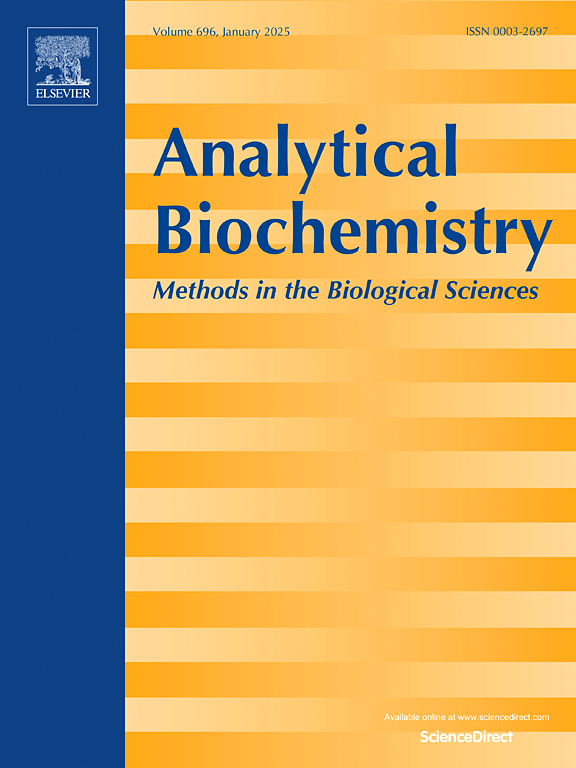Electrochemical aptasensor for determination of testosterone using an aptamer-nanogold-metal-organic framework-ionic liquid modified carbon paste electrode
IF 2.5
4区 生物学
Q2 BIOCHEMICAL RESEARCH METHODS
引用次数: 0
Abstract
The present study is based on the design and construction of a selective label-free electrochemical aptasensor for testosterone (TST) detection in real samples. A carbon paste electrode modified with gold nanoparticles and metal-organic framework-ionic liquid (AuNPs/Fe3O4–NH2@Cu-ILCPE) was used to covalently immobilize the TST aptamer (TST-apt). The AuNPs/Fe3O4–NH2@Cu-ILCPE represents a distinguished ability for enhancement of electrochemical peak current, which may emerge from the aptamer on the electrode surface. Initially, the dependency of signals to variables like the aptamer concentration, aptamer immobilization time, AuNPs electrodeposion time, and aptamer reaction time was investigated and optimized. Under the optimized conditions, the proposed aptasensor has two linear ranges over 1.0–50.0 nM and 50.1–1000.0 nM with a limit of detection of 0.31 nM, and a limit of quantification of 0.99 nM. The aptasensor was also applicable to detecting TST in urine samples with satisfactory recoveries of 97.2–103.8 %.

采用纳米金-金属-有机骨架-离子液体修饰碳糊电极的电化学配体传感器测定睾酮。
本研究设计并构建了一种用于检测真实样品中睾酮(TST)的选择性无标记电化学传感器。采用金纳米颗粒修饰的碳糊电极、金属有机框架-离子液体(AuNPs/Fe3O4-NH2@Cu-ILCPE)共价固定 TST 合酶(TST-apt)。AuNPs/Fe3O4-NH2@Cu-ILCPE 具有增强电化学峰值电流的卓越能力,这种峰值电流可能来自电极表面上的适配体。最初,研究人员调查并优化了信号与适配体浓度、适配体固定时间、AuNPs 电沉积时间和适配体反应时间等变量的关系。在优化条件下,该传感器的线性范围分别为 1.0-50.0 nM 和 50.1-1000.0 nM,检出限为 0.31 nM,定量限为 0.99 nM。该传感器还可用于检测尿样中的 TST,回收率高达 97.2-103.8%。
本文章由计算机程序翻译,如有差异,请以英文原文为准。
求助全文
约1分钟内获得全文
求助全文
来源期刊

Analytical biochemistry
生物-分析化学
CiteScore
5.70
自引率
0.00%
发文量
283
审稿时长
44 days
期刊介绍:
The journal''s title Analytical Biochemistry: Methods in the Biological Sciences declares its broad scope: methods for the basic biological sciences that include biochemistry, molecular genetics, cell biology, proteomics, immunology, bioinformatics and wherever the frontiers of research take the field.
The emphasis is on methods from the strictly analytical to the more preparative that would include novel approaches to protein purification as well as improvements in cell and organ culture. The actual techniques are equally inclusive ranging from aptamers to zymology.
The journal has been particularly active in:
-Analytical techniques for biological molecules-
Aptamer selection and utilization-
Biosensors-
Chromatography-
Cloning, sequencing and mutagenesis-
Electrochemical methods-
Electrophoresis-
Enzyme characterization methods-
Immunological approaches-
Mass spectrometry of proteins and nucleic acids-
Metabolomics-
Nano level techniques-
Optical spectroscopy in all its forms.
The journal is reluctant to include most drug and strictly clinical studies as there are more suitable publication platforms for these types of papers.
 求助内容:
求助内容: 应助结果提醒方式:
应助结果提醒方式:


